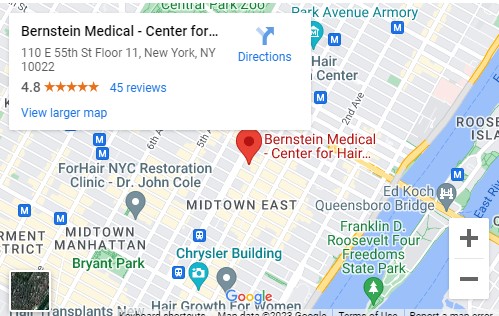
Synopsis: This study compares the hair replacement techniques of mini-micrografting, vertical sectioning and single-strip harvesting with stereo-microscopic dissection for the generation of follicular unit grafts. It validated the superiority of the latter technique and supported the idea that if one wants to perform Follicular Unit Transplantation properly, single strip harvesting and microscopic dissection should be required.
Synopsis: This popular guide on hair restoration is revised to include the latest advances in medical and surgical treatments for hair loss and an expanded section of before and after photos.
Robert M. Bernstein, MD, William R. Rassman, MD, and Nazia Rashid Dermatologic Surgery 2001; 27(1): 5-11. College of Physicians and Surgeons, Columbia University, New York, New York Background The most common type of donor closure in hair transplantation is with non-absorbable, running sutures, usually of nylon or polypropylene. This is accomplished with, or without, buried […]
Synopsis: This paper introduces a new synthetic suture for surgical hair restoration called Poliglecaprone 25 or Monocryl. It is a strong, absorbable, suture with low tissue reactivity that can be used in hair transplantation to close the donor wound with a single, running stitch. This suture can provide a donor closure that ensures hemostasis, has little risk of infection and is comfortable for the patient, and generally results in a fine surgical scar.
Synopsis: This editorial emphasizes that an accurate representation of a hair transplant technique is important, even if it is with respect to how it is named, so that the public may make informed decisions about the procedures they choose.
Synopsis: This editorial discusses the important observation of Gandelman that the drying of grafts during a hair transplant is a common denominator for other forms of injury, as it makes the grafts more subject to damage due to crushing and warming during the procedure.
Synopsis: The risks of using too much adrenaline in a hair transplant are discussed and a number of alternative methods of establishing hemostasis are offered including; body positioning, florescent lighting, ring-block anesthesia, tumescence, pre-making recipient sites, applying bi-manual traction, and creating a snug fit between the recipient site and graft.
Synopsis: When follicular unit transplantation was still in its infancy, there were many detractors in the hair transplant community. This paper defended the procedure and explained its superiority over other hair replacement techniques in producing the best short and long-term cosmetic results.






